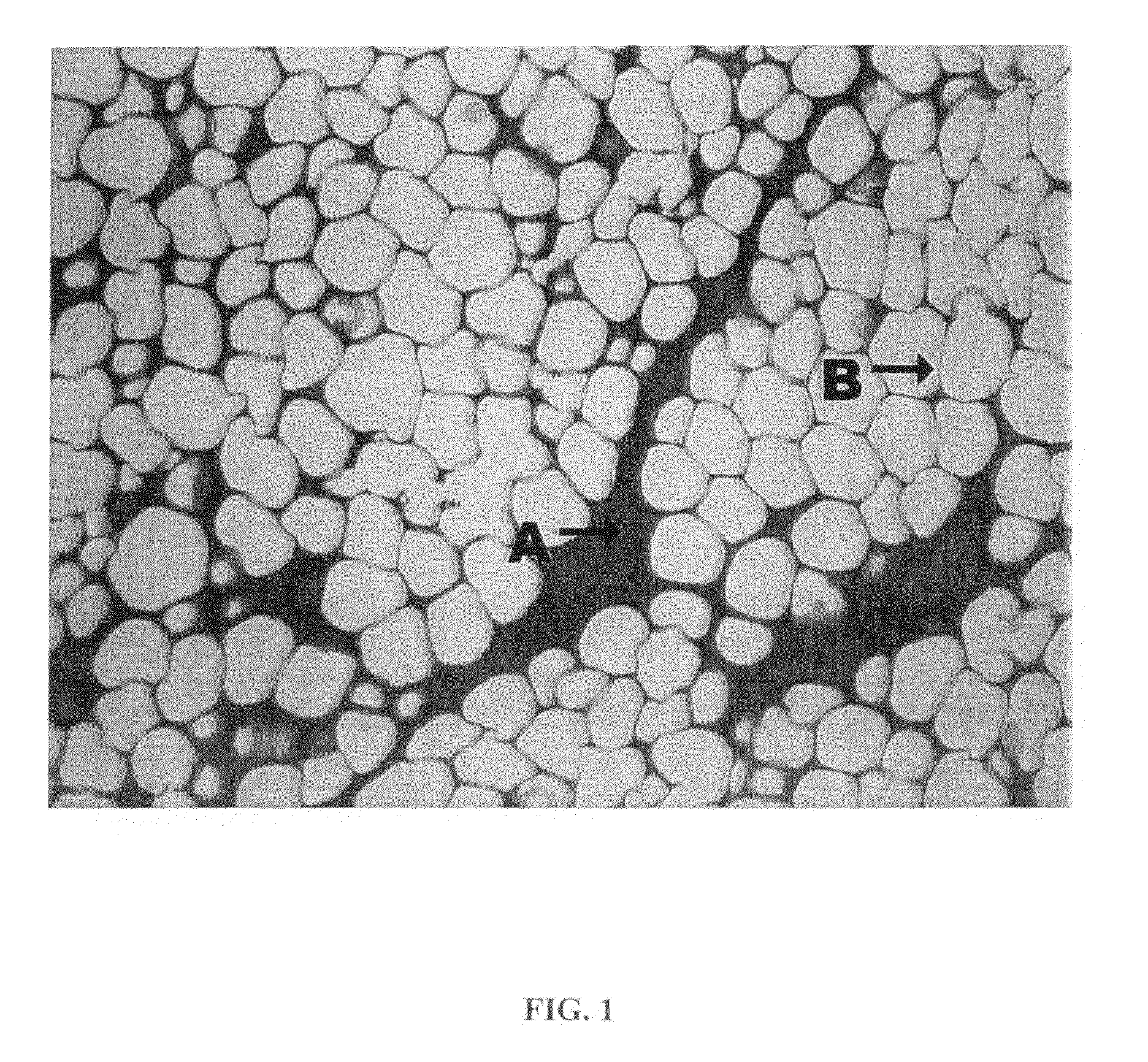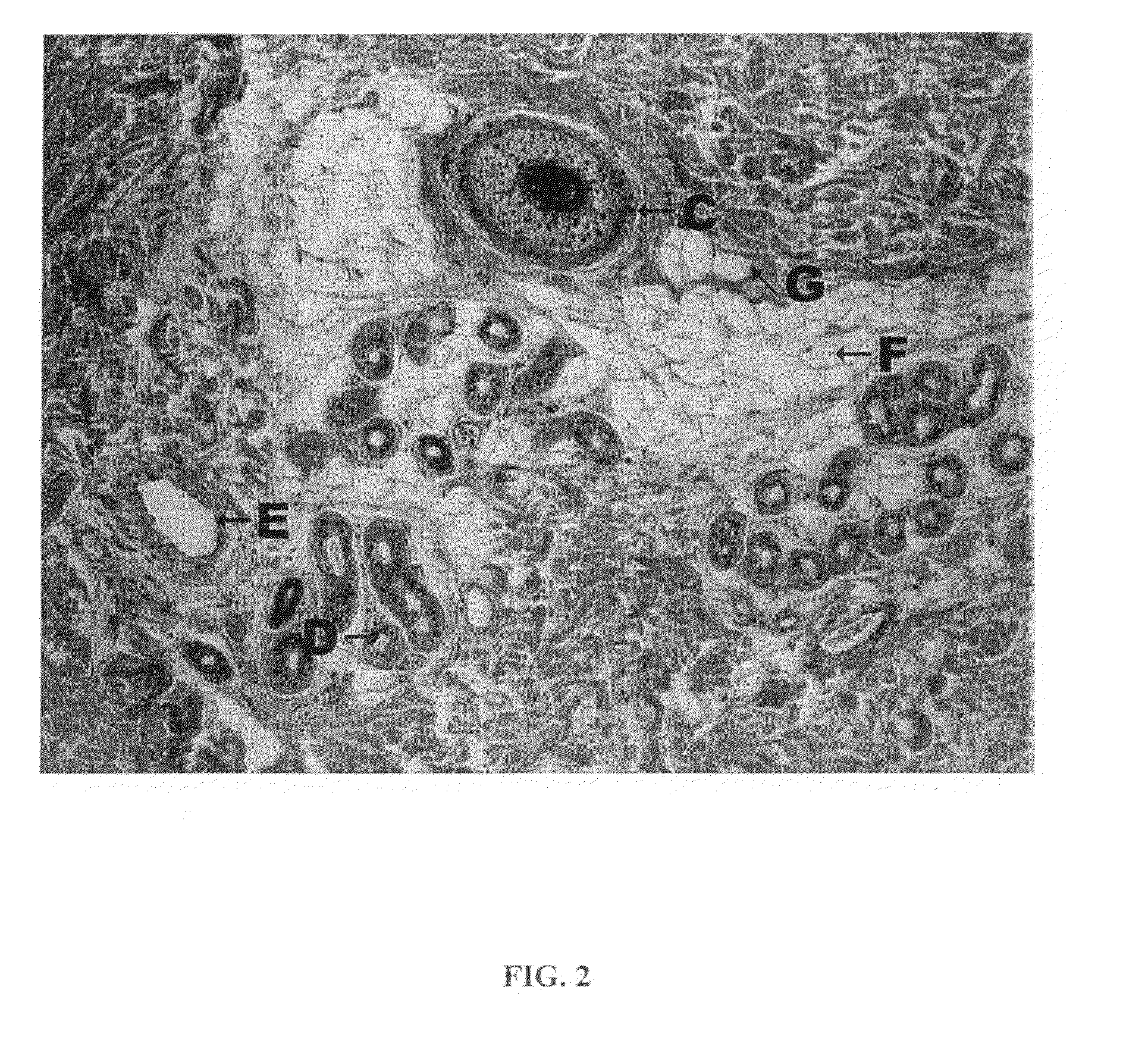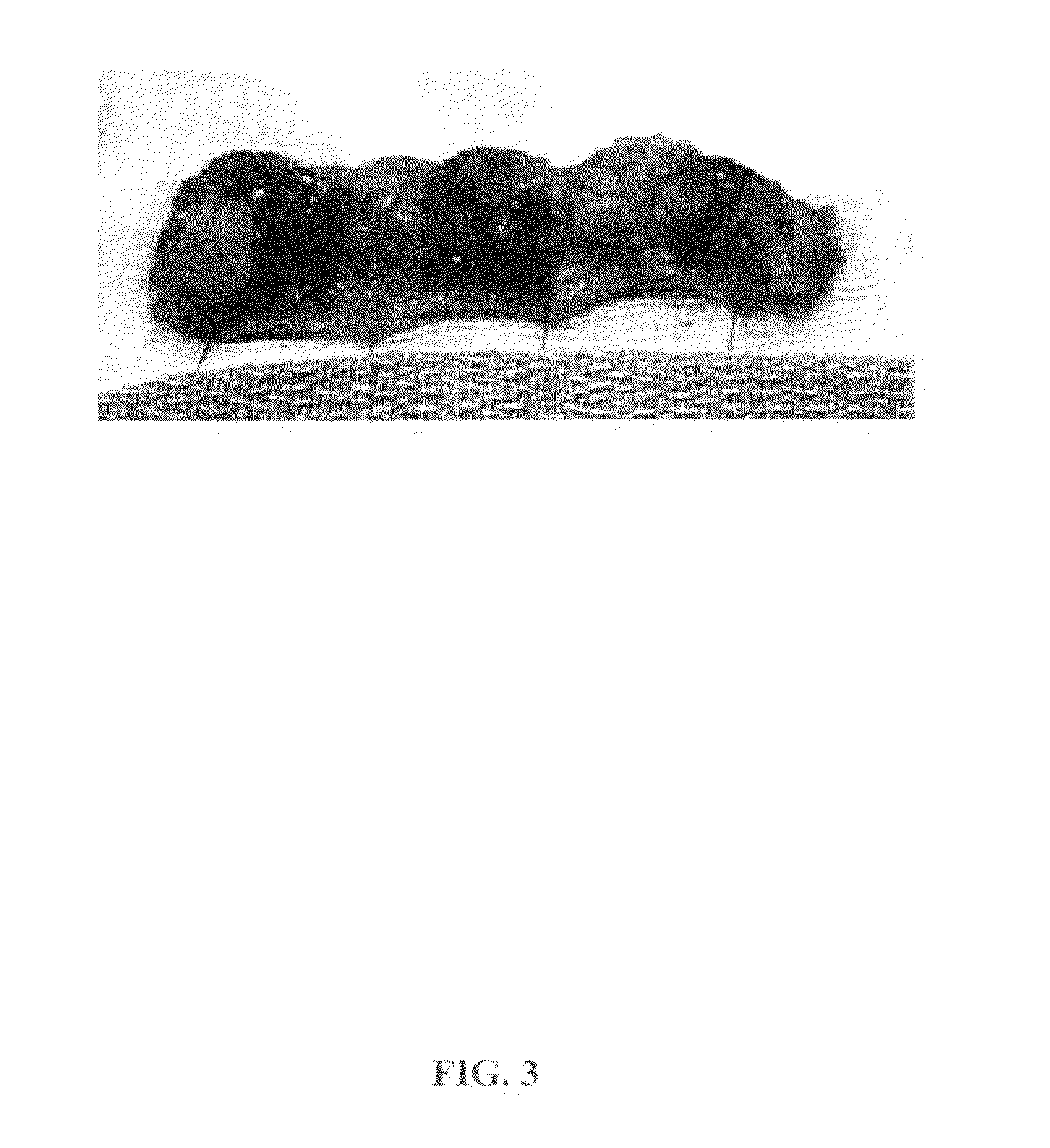Compositions and methods to reduce fat and retract skin
a technology of fat tissue and composition, applied in the direction of drug composition, phosphorous compound active ingredients, metabolic disorders, etc., can solve the problems of insufficient dispersion through fat tissue, marked prolonged inflammatory reaction, and unresolved problems, so as to reduce inflammation, increase lipolytic activity, and reduce the effect of inflammatory respons
- Summary
- Abstract
- Description
- Claims
- Application Information
AI Technical Summary
Benefits of technology
Problems solved by technology
Method used
Image
Examples
example 1
In Vitro Double Blind Stem Cell Study of Lipolytic Formulas
[0064]Lipolysis induced in cultured human adipocytes by certain embodiments of the inventive injectable compositions for fat reduction and their constituent components was assayed in vitro under controlled conditions. The results show that compositions for fat reduction which include phosphatidylcholine-deoxycholate perform optimally within a narrow range of PC:DC ratios.
[0065]Cells utilized for the in vitro assays were obtained from five different dermolipectomy specimens. Preadipocytes were cultured in differentiation media over 14 days to produce adipocytes incubated between 12-14 hours in each of 12 test solutions. Each of the cell lines incubated in each of the 12 test solutions were split and introduced into four in vitro assays.
[0066]Cell lines were incubated in each of the following compositions:[0067]1. Phosphatidylcholine 25.6 milligrams per milliliter (mg / mL) / Deoxycholate 24.8 mg / mL, Benzyl Alcohol 25.6 mg / mL, ISU...
PUM
| Property | Measurement | Unit |
|---|---|---|
| distance | aaaaa | aaaaa |
| distance | aaaaa | aaaaa |
| depth | aaaaa | aaaaa |
Abstract
Description
Claims
Application Information
 Login to View More
Login to View More - R&D
- Intellectual Property
- Life Sciences
- Materials
- Tech Scout
- Unparalleled Data Quality
- Higher Quality Content
- 60% Fewer Hallucinations
Browse by: Latest US Patents, China's latest patents, Technical Efficacy Thesaurus, Application Domain, Technology Topic, Popular Technical Reports.
© 2025 PatSnap. All rights reserved.Legal|Privacy policy|Modern Slavery Act Transparency Statement|Sitemap|About US| Contact US: help@patsnap.com



